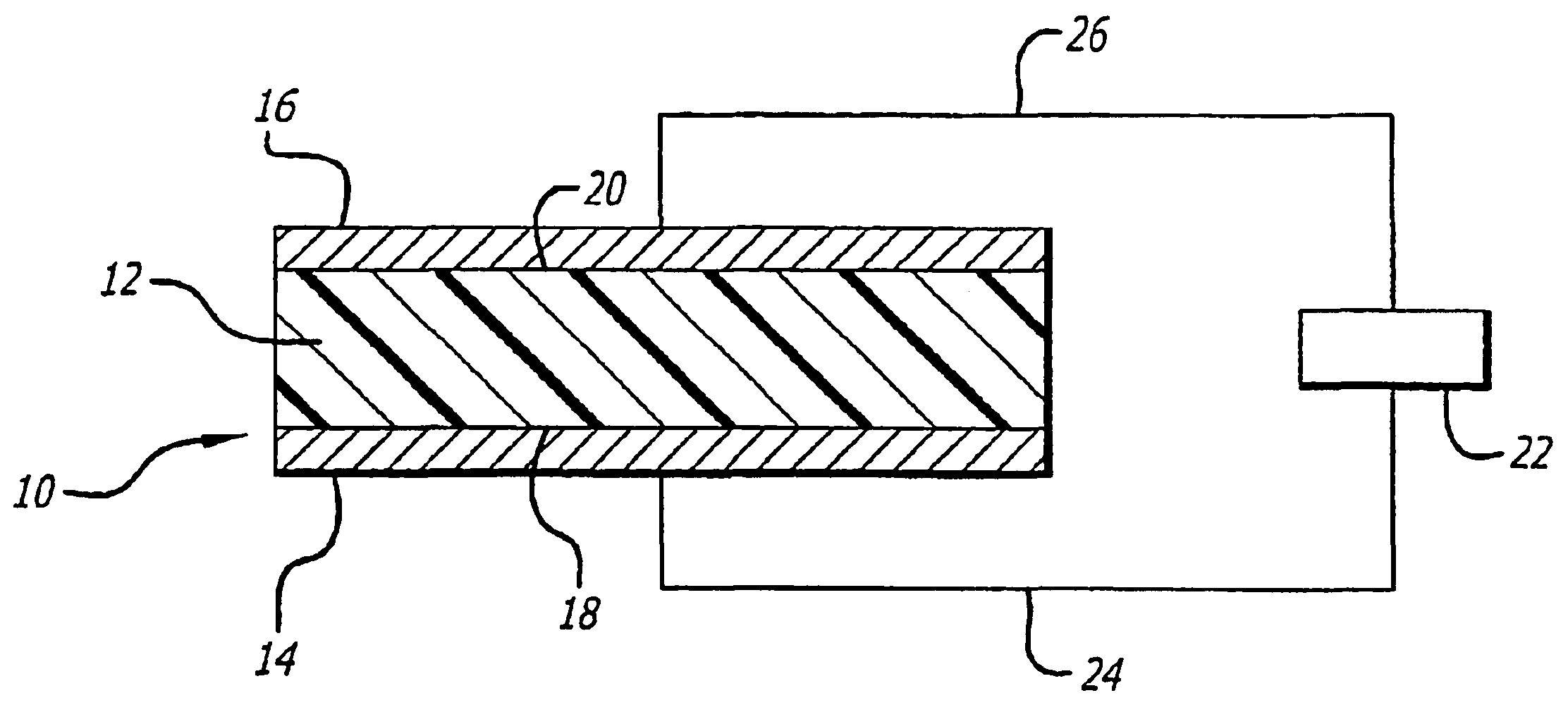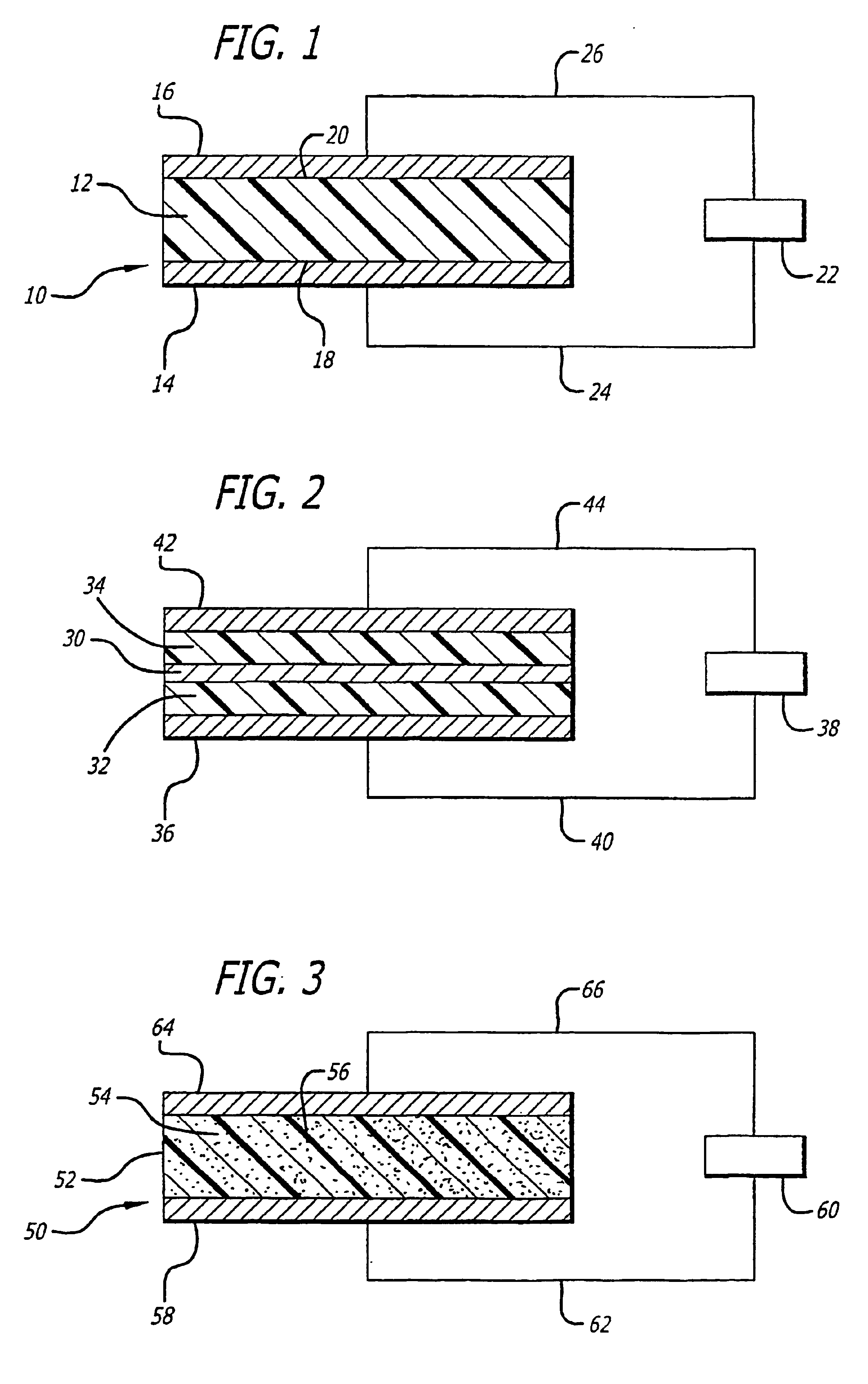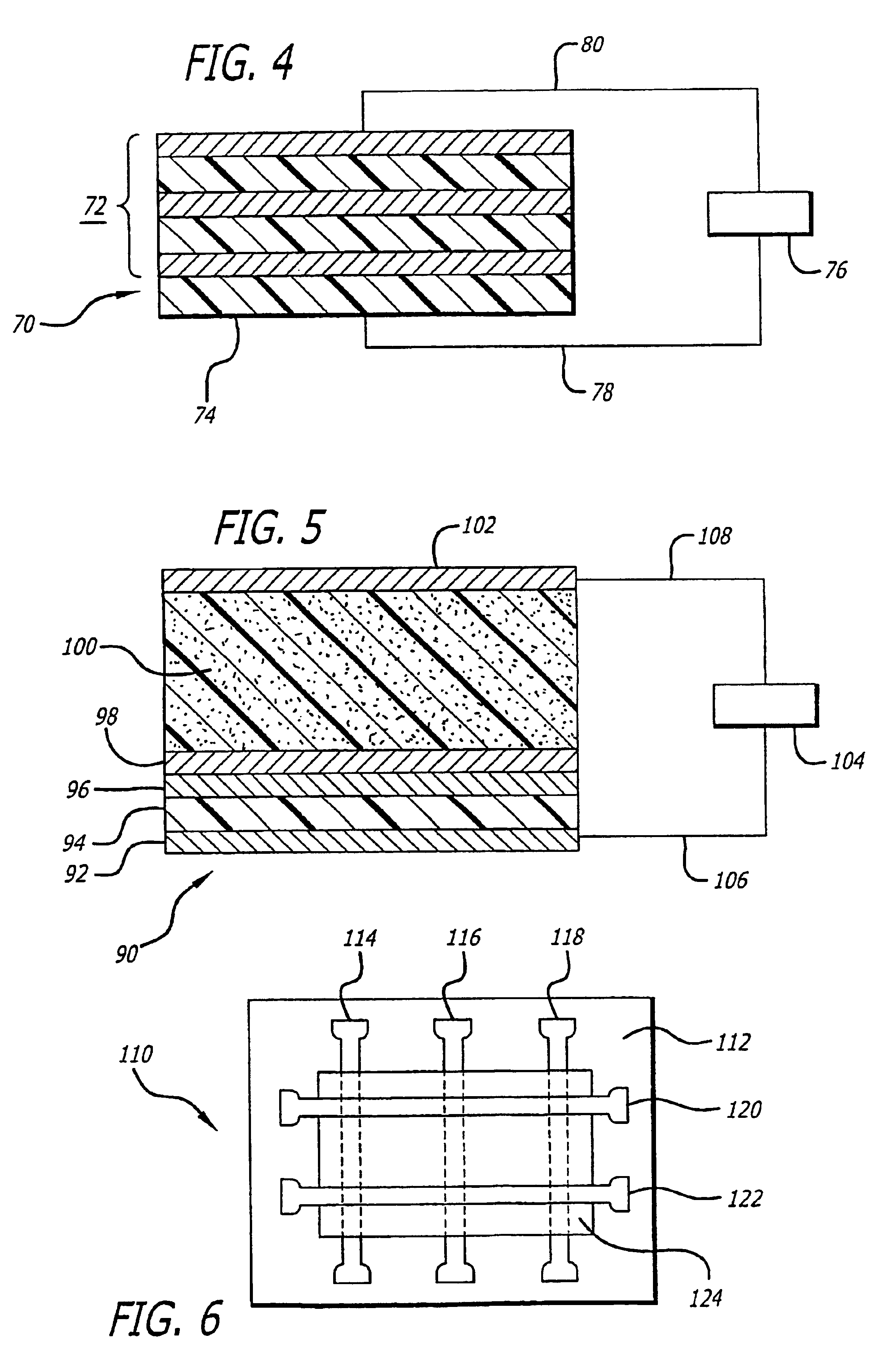Organic bistable device and organic memory cells
a bistable device and organic technology, applied in solid-state devices, nanoinformatics, instruments, etc., can solve the problems of complex architecture, reduced electroluminescence of doped polymers, and relatively long time-consuming rotation of dipole groups
- Summary
- Abstract
- Description
- Claims
- Application Information
AI Technical Summary
Benefits of technology
Problems solved by technology
Method used
Image
Examples
example 1
[0049]A bistable device was fabricated as shown in FIG. 2. The first step in the fabrication of the device involved the vacuum deposition of a layer (50 nm thick) of aluminum (Al) on top of a pre-cleaned glass substrate. This Al functioned as the anode layer 36 of the device. Next, the first low conductivity layer 32, the thin metal layer 30, and the second low conductivity layer 34 were sequentially evaporated on top of the Al anode layer 36. Then, the cathode metal (Al) was evaporated onto the top layer 34 to form a cathode layer 42 which was 50 nm thick. The depositions were carried out in a vacuum of about 1×10−6 torr and the thickness of the depositing species controlled by a quartz crystal monitor. The low conductivity layers 32 and 34 were 40 nm thick with the central high conductivity layer 30 being 20 nm thick. Aluminum was used for the central layer 30. 2-amino-4-5-imidazoledicarbonitrile (AIDCN) was used for the two low conductivity layers (32 and 34).
[0050]The I-V curves...
example 2
[0051]A bistable device was made in the same manner as Example 1 except that three high conductivity Al layers (each 20 nm thick) were deposited between alternating layers of AIDCN (each 20 nm thick). The device exhibited bistable characteristics in that the conductivity changed from 10−11 to 10−8 (1 / ohm.cm) upon application of a 5 V. bias. The device was convertible back to a low conductivity state by application of a −5V bias.
example 3
[0052]A bistable device was made in the same manner as Example 1 except that Cu was substituted for Al as the high conductivity material in layer 30. The Cu layer was 33 nm thick and the two AIDCN layers 32 and 34 were 50 nm thick. The I-V curves are shown in FIG. 8 where it can be seen that the transition from the high resistance state to low resistance state is accompanied by a sharp change in current up to 5 orders in magnitude. FIG. 9 shows I-V curves for multiple sweeps. The numbers next to the curves correspond to the bias sweep sequence. The multiple sweeps shown in FIG. 9 demonstrate that the transition is reversible.
PUM
 Login to View More
Login to View More Abstract
Description
Claims
Application Information
 Login to View More
Login to View More - R&D
- Intellectual Property
- Life Sciences
- Materials
- Tech Scout
- Unparalleled Data Quality
- Higher Quality Content
- 60% Fewer Hallucinations
Browse by: Latest US Patents, China's latest patents, Technical Efficacy Thesaurus, Application Domain, Technology Topic, Popular Technical Reports.
© 2025 PatSnap. All rights reserved.Legal|Privacy policy|Modern Slavery Act Transparency Statement|Sitemap|About US| Contact US: help@patsnap.com



